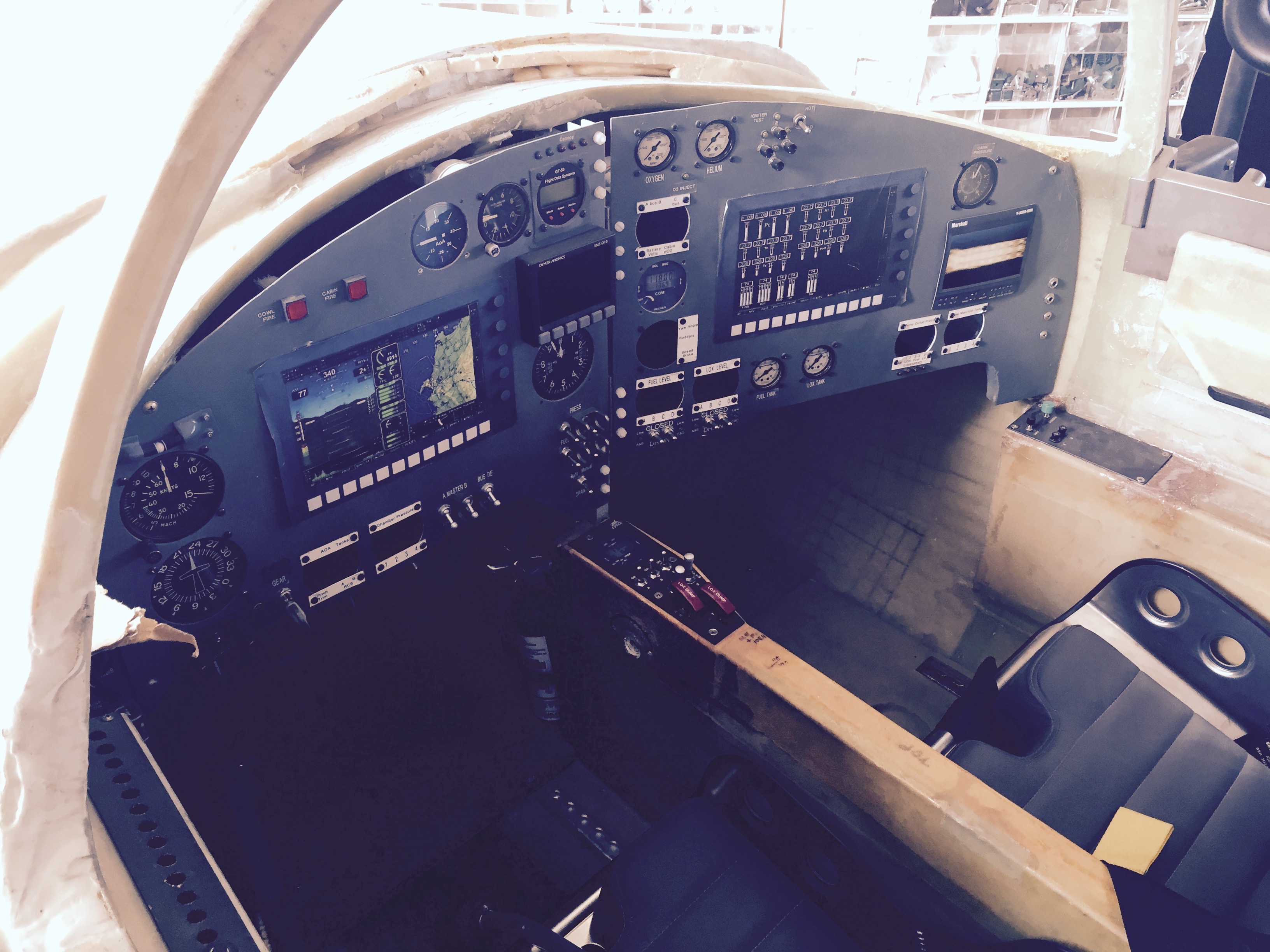The desert was frigid and the sun was just peeking over the mountains when we arrived at the Mojave Air & Space Port. A full-scale rocket prototype at the end of a long driveway marked the spaceport’s entrance. I was just a walk away from realizing a small part of a big dream: being part of space exploration.
Space travel and participation in the space economy are pretty much impossible for all but the most elite scientists, astronauts, and billionaires. XCOR, an aerospace company with unique methane-based rockets and a reusable space plane, enlisted my firm to design a completely immersive experience and bring the exhilaration of space travel alive for students, pilots, and investors.
The project required the transportive power of virtual reality and an entirely new approach to storytelling rooted in empathy. Our solution: a virtual mock-up of the rocket’s cabin, in a spherical projection of low Earth orbit, that could be experienced through a virtual reality headset. Guided by realistic physics, pilots could navigate the ship in any direction and, for a few moments, experience spaceflight.
Building a new reality
VR is a lens to places you can’t normally go, whether that be the front line of a war, the bottom of the ocean, or 70 miles above Earth’s surface. In the case of the latter, the headset becomes much more than a technology. It’s a door to the final frontier.
More than any other medium, VR can inspire empathy for the individuals whose experiences are recreated. Project Syria, for instance, transports users directly onto an Aleppo street besieged by bombs. Experiencing another’s reality firsthand is a powerful tool for change — one we’re just beginning to explore.
But designing VR in a way that realizes the medium’s full potential takes more than just technical skill. It takes empathy to fully recreate another person’s reality and bring the experience alive for users. Immersive VR design also requires an acute understanding of human behavior and an understanding of users’ desires and needs. To ensure you’re designing with empathy, follow these simple strategies:
1. Have a point of view.
VR as a tool for creating empathy requires a point of view. You’re taking your audience on a journey, and you as the designer are guiding the experience. In any way possible, immerse yourself in the subject matter you’re trying to recreate.
Observation and user diaries are two effective methods for capturing the firsthand point of view. The virtual experience we designed for XCOR, for instance, was translated from firsthand accounts from XCOR’s team. I worked with astronaut Brian Binnie to understand what spaceflight would look, feel, and sound like inside the company’s proposed rocket-powered spaceplane. I saw inside the cockpit and spoke directly to almost every person involved, from the operations team to the engineers. Forming a point of view requires an empathetic approach to the work at hand.
2. Understand the medium.
Most designers are accustomed to 2D interfaces, but VR isn’t linear. It’s spherical in every sense. Audio can be experienced from any angle, and environments can be explored in any direction.
Your audience can choose to walk through a door, turn a corner, or sit down. What happens when they do? Learn everything you can about the methods and tools for creating new kinds of experiences, and don’t assume what you’ve learned in the past will apply to 3D environments.
3. Understand the technology.
VR isn’t everywhere yet, so our exposure to it as designers remains limited. Apps such as The New York Times VR app, Google’s Cardboard, and Roundme are powerful platforms for experiencing the technology. Headsets are powerful but also bulky and far less common, so explore the capabilities and limitations of mobile before assuming headsets and powerful computing platforms are necessary. For most design projects, broad exposure will trump performance because brand impact is strongest when access to an experience is widespread.
4. Prototype everything.
No matter the technology you’re designing for, prototype everything so you can experience how it will perform and explore unintended consequences in a cost-effective manner. In my firm, we’ve created cardboard iPhones and paper strips that represent interactive screens. We project interfaces to simulate gestural touch screens. VR environments can be simulated easily to explore nonlinear content creation. You’re living in the reference shot, so use the world around you to set up your environments and plan your experiences.
5. Consider the entire user experience.
VR is an isolating technology. Be aware of the barrier you’re putting between your audience and the physical world, and design stories and experiences that the audience can jump in and out of quickly.
Because VR can be disorienting and physically demanding, take posture, position, and motion into account. Turning around and looking behind you isn’t as easy as it seems when you’re sitting in a chair with limited sensory input, with your eyes and ears occupied by headphones and close-proximity screens.
Designing a fully immersive experience is difficult, but the payoff is immense — if you design with empathy. Strive to fully understand the way your users think and work. Understand how they might be different and how they’ll feel moving about in the world you’ve created.

